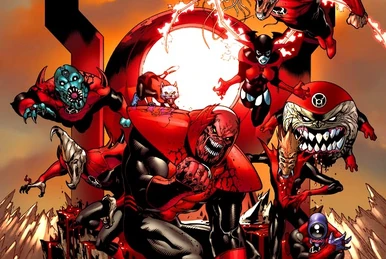In the latest issue of Alan Scott: The Green Lantern, writer Tim Sheridan and artist Cian Tormey introduce DC’s newest team of supervillains, the Crimson Host. This team of Red Lantern-powered Soviet soldiers brings a unique 1950s gimmick to the ongoing conflict between Green Lantern and the Red Lantern.
As the battle between Green Lantern and the Red Lantern reaches a stalemate, the unexpected arrival of the Crimson Host adds a new dimension to the storyline. Powered by the Crimson Flame, the Soviet soldiers immediately set themselves apart with their retro gimmick, presenting a formidable challenge to both heroes.
The introduction of the Crimson Host enriches the mythos of Alan Scott by delving into the origins of the Red Lantern and his connection to the Soviet spy world. The Red Lantern, originally a Soviet spy and lover of Alan Scott, draws his power from the Crimson Flame, a fragment of the Starheart. This unique power source, while similar to the Red Light of Rage, carries its own toll on the host.
Moreover, the inclusion of the Crimson Host allows Alan Scott: The Green Lantern to explore the cultural and societal context of the 1940s and 1950s, particularly the LGBTQIA+ community’s plight and the heightening tensions of the Cold War. The team symbolizes the fears of 1950s America, embodying the “Red Scare” paranoia and the perceived threat of Communist infiltration.
Unlike the Red Lantern, who still retains some humanity and empathy, the Crimson Host appears devoid of such qualities, making them a formidable and ruthless adversary. However, their reliance on the Crimson Flame raises questions about their long-term survival and the potential consequences of wielding such power.
As the storyline unfolds, readers can expect the Crimson Host to pose a significant challenge to Green Lantern and the Red Lantern, while also adding depth to the narrative and exploring themes relevant to the era in which they operate.
FAQ
What makes the Crimson Host unique in the context of DC comics?
The Crimson Host distinguishes itself with its 1950s Soviet gimmick and its connection to the Red Lantern and the Cold War era. Powered by the Crimson Flame, they embody the fears and paranoia of 1950s America, adding a new dimension to the ongoing conflict.
How does the Crimson Host contribute to the mythos of Alan Scott?
The introduction of the Crimson Host enriches Alan Scott’s backstory by exploring the origins of the Red Lantern and his ties to the Soviet spy world. It delves into the complexities of power and loyalty, while also shedding light on the cultural and societal context of the 1940s and 1950s.
What themes does Alan Scott: The Green Lantern explore through the Crimson Host?
The comic delves into themes of LGBTQIA+ representation, Cold War tensions, and the “Red Scare” paranoia of the 1950s. Through the Crimson Host, it examines the impact of fear and mistrust on society and individuals.
How does the Crimson Flame differentiate from other power sources in the DC universe?
The Crimson Flame, while similar to the Red Light of Rage, carries its own toll on its host. It represents a unique power source with distinct consequences, adding complexity to the characters and their abilities.
What challenges might the Crimson Host face in future storylines?
The reliance on the Crimson Flame raises questions about the sustainability of their power and the potential consequences of wielding such immense energy. The storyline may explore the limits of their abilities and the sacrifices required to maintain their strength.
